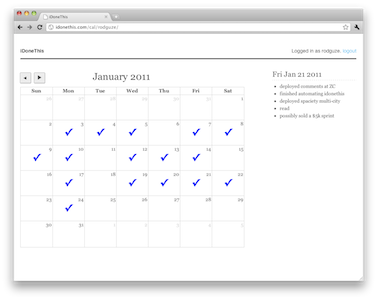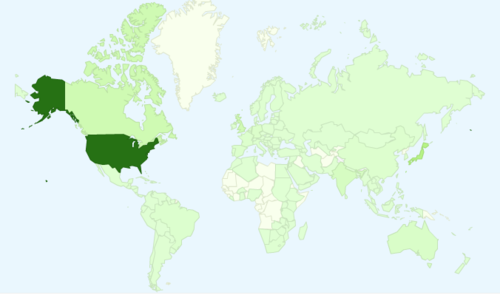Passing 10,000 users felt awesome and we did it with three dead simple techniques that anyone can execute.

1. Custom narratives for influential communities. I wrote in April how we made it to 5,000 users by constructing custom narratives for Hacker News, Reddit, and Lifehacker. We described iDoneThis to a community as both (a) a solution to the problems specific to that community with (b) an emotional hook that the community could relate to while (c) giving signals that reflect that we’re members of the community.

2. A product so simple that anyone can understand and use it. When a product is simple and easily understandable by a broad range of people, many different kinds of people will see many different ways to use the product. For example, MakeUseOf wrote about how we were like a “mini-assistant that reminds you to log what you did”, rather than the strict productivity angle taken by Lifehacker.
When different kinds of people see many different ways to use the product, different story lines organically emerge — which means that the product spreads.

3. Embrace your users worldwide. When we launched, iDoneThis emails went out for every single user at 6pm Pacific Time. That means that if you were in the UK, you’d get your email at 2am the next day. Our email was nearly worthless if you were in the UK, India, Japan or anywhere outside of North and South America, and we saw that reflected in our engagement. Early on, nearly 100% of users not in North or South America did not use us longer than a week, even those who loved the product.
The most useful tweak we made to the product early on was to allow the user to pick his/her timezone. We went from having an exclusively North and South American base of active users to getting written up by blogs and press around the world, enlarging our pie of users overall and growing its proportion to about 30% of active users.
